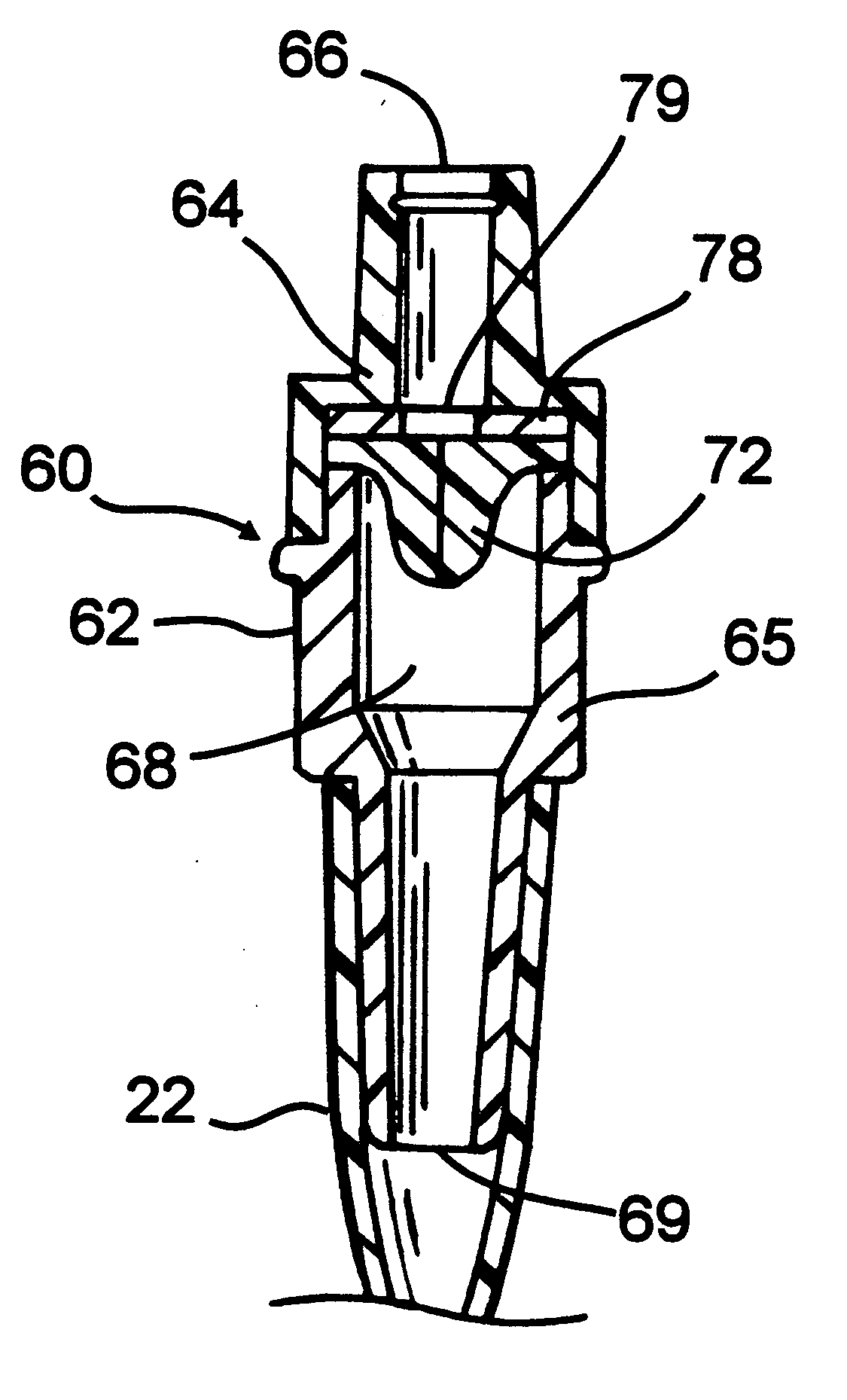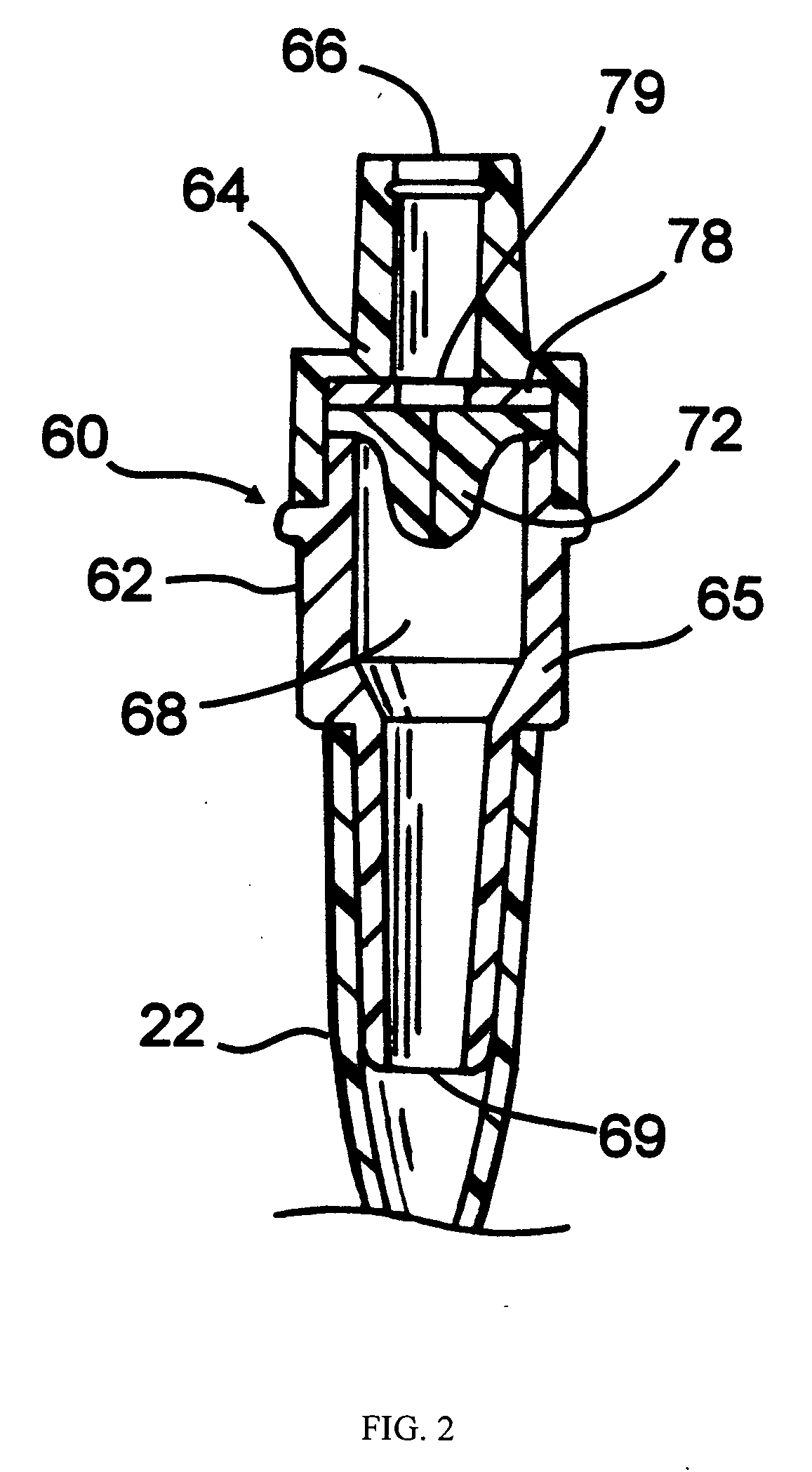Thoracentesis catheter system with self-sealing valve
a thoracentesis catheter and self-sealing technology, applied in the field of medical devices, can solve the problems of existing thoracentesis devices exhibiting drawbacks, risk of lung collapse, and risk of lung collaps
- Summary
- Abstract
- Description
- Claims
- Application Information
AI Technical Summary
Benefits of technology
Problems solved by technology
Method used
Image
Examples
Embodiment Construction
[0014]Although the present invention can be made in many different forms, a preferred embodiment is described in this disclosure and shown in the attached drawings. This disclosure exemplifies the principles of the present invention and does not limit the broad aspects of the invention only to the illustrated embodiments.
[0015]FIG. 1 shows an elevational view of a thoracentesis catheter with self sealing valve 10 made in accordance with the principles of the present invention. The thoracentesis catheter with self sealing valve 10 includes an elongated catheter 20 with a catheter hub 22 and a self-sealing valve 60. The catheter 20 is fixedly attached to the catheter hub 22 and the catheter hub 22 is fixedly attached to the self-sealing valve 60. An elongated insertion needle 14 extends through the catheter 20, through the catheter hub 22 and through the self-sealing valve 60. A syringe 12 is removably connected to the insertion needle 14 by an interference fit or luer fitting 16. The...
PUM
 Login to View More
Login to View More Abstract
Description
Claims
Application Information
 Login to View More
Login to View More - R&D
- Intellectual Property
- Life Sciences
- Materials
- Tech Scout
- Unparalleled Data Quality
- Higher Quality Content
- 60% Fewer Hallucinations
Browse by: Latest US Patents, China's latest patents, Technical Efficacy Thesaurus, Application Domain, Technology Topic, Popular Technical Reports.
© 2025 PatSnap. All rights reserved.Legal|Privacy policy|Modern Slavery Act Transparency Statement|Sitemap|About US| Contact US: help@patsnap.com



